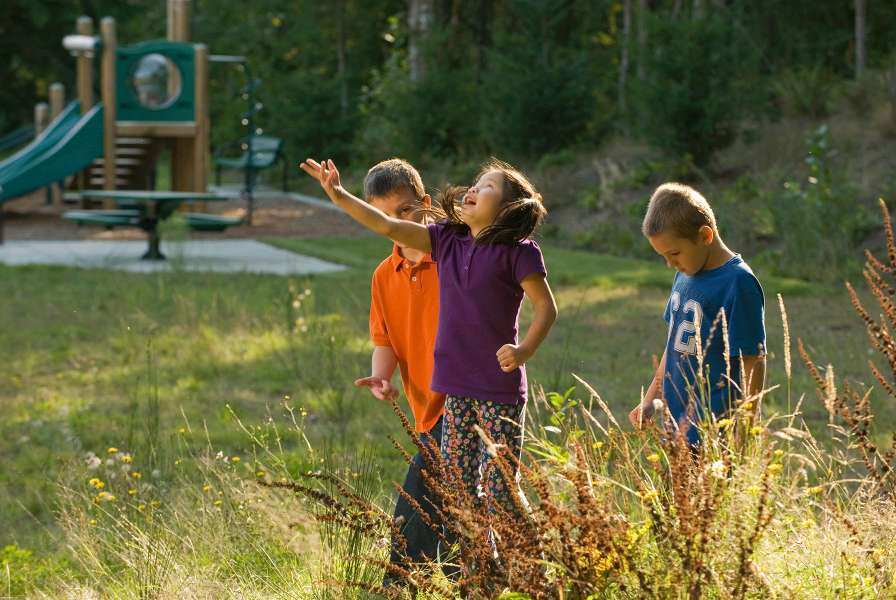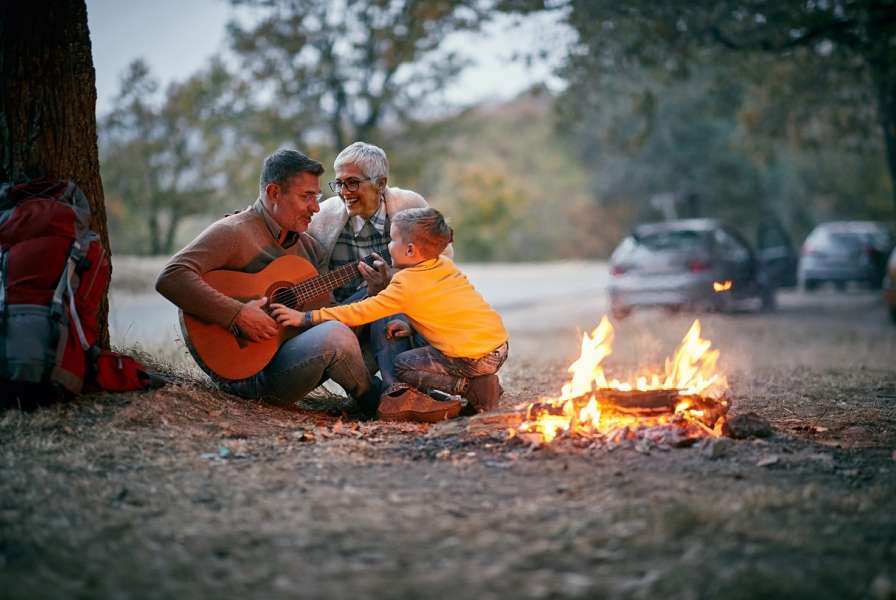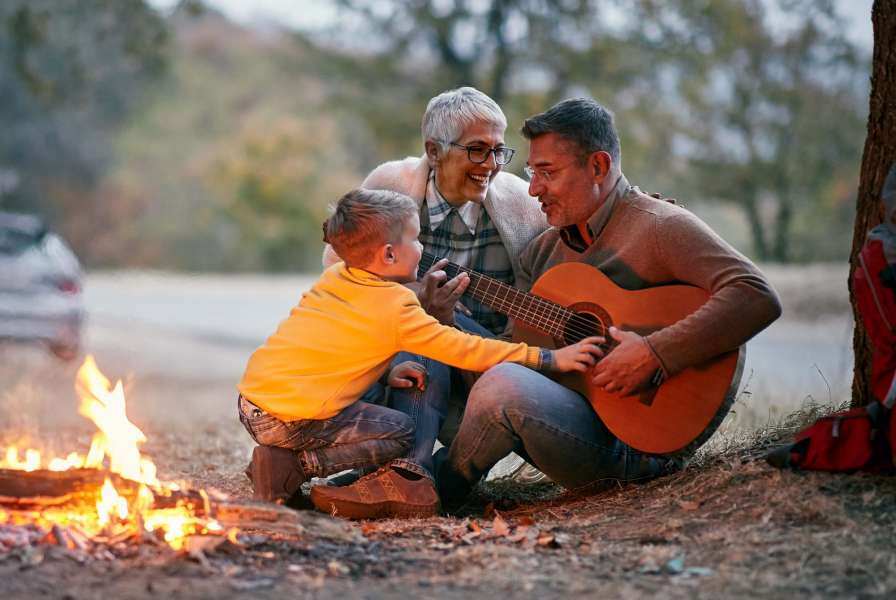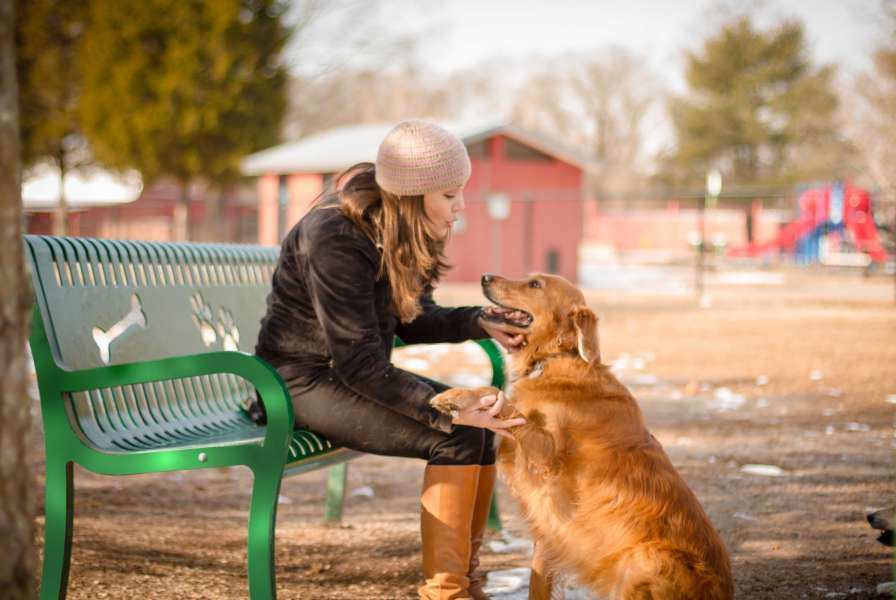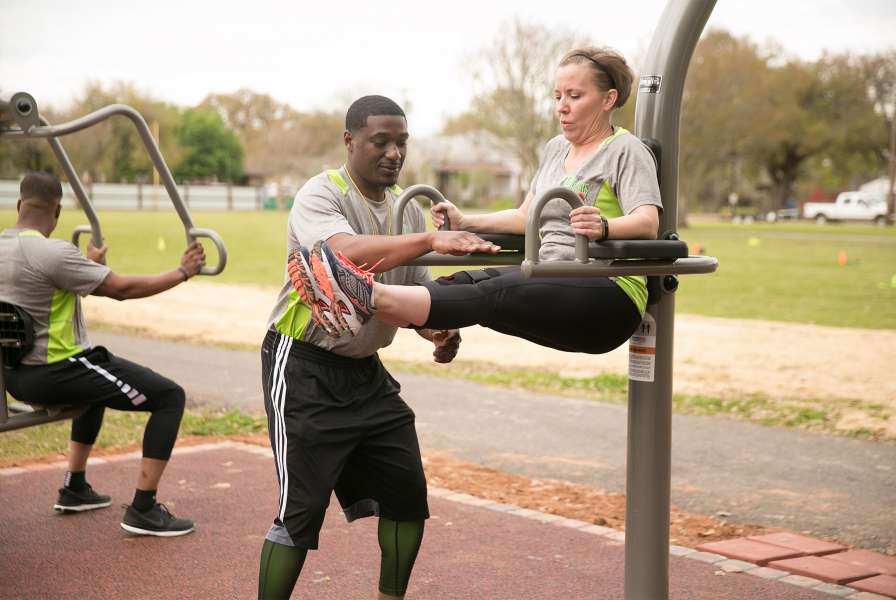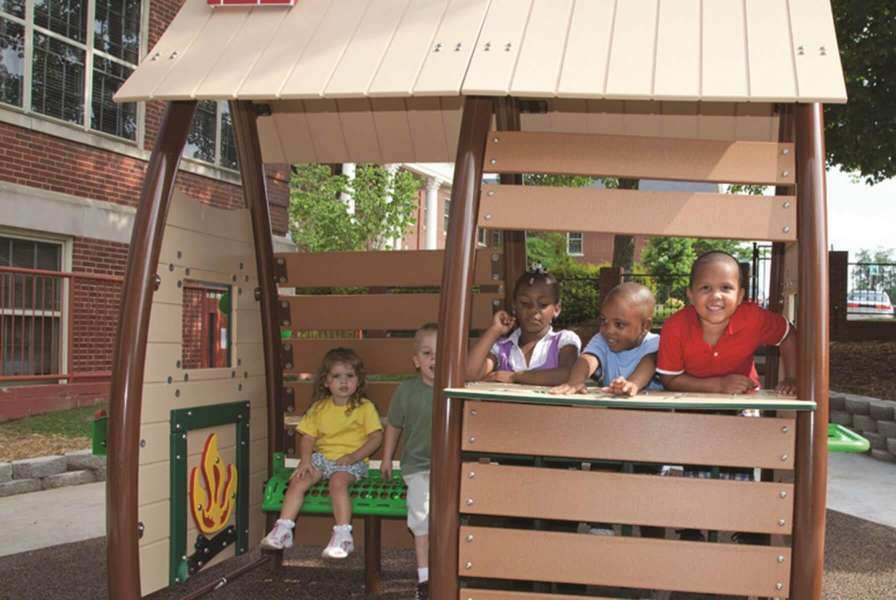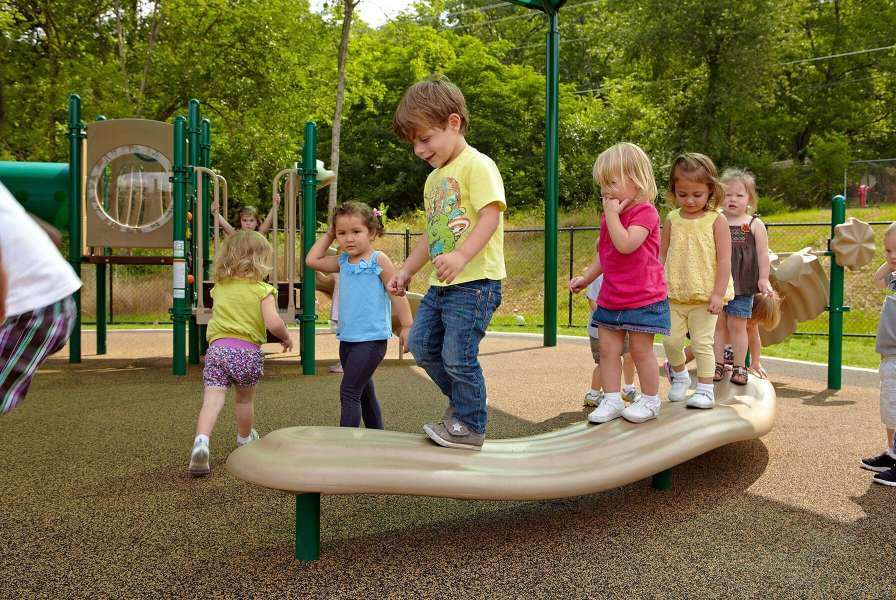Engaging with Nature
Research reveals a strong link between children's exposure to nature and their psychological well being and healthy human development. Widespread technology use, overscheduled lifestyles, and high-stakes testing often contribute to less time spent playing outdoors. It is imperative that parents, educators, and professionals encourage outdoor play and find ways to reconnect children with nature and infuse the natural world into the everyday spaces of childhood. Designers, planners, and committees are often seeking ways to bring nature to people and bring more people to nature.NatureGrounds: Creating & Retrofitting Play Environments, developed in partnership with PlayCore and the Natural Learning Initiative, College of Design, NC State University, offers best practice guidelines for integrating "planting pockets" to add play value around and between play equipment, in areas large enough for shade trees, shrubs, decorative grasses, and perennial plants. Research shows that naturalized play environments not only add play value, but increase physical activity, social interactions, and environmental sustainability.
When a playground is designed to include nature, it opens the doors for a variety of formal and non-formal educational programs and initiatives. As an example, you can create lessons that help children to visually identify local floral and fauna found in your recreation space, identify key factors healthy plant growth, learn the importance of photosynthesis and/or identify chlorophyll and other pigments of colored leaves. Consider making these activities easily accessible to local schools. parents, or other groups through downloadable lesson plans, website activities for children, or simple handouts located at the site to further encourage field trips, nature walks, and meaningful learning opportunities. Nature themed elements that are combined with educational signage can also help implement curriculum goals and promote environmental literacy.
Depending on the goals of the programming, child-friendly plants that are native to your region can provide loose parts, wildlife enhancement, seasonal change, and multisensory benefits to your programming efforts.
Other opportunities such as sand/water play, gardening, and wildlife observation can provide endless opportunities for children to develop a passion for the natural world and develop a strong sense of environment stewardship.
Infusing Play into Pathways
Pedestrian and bicycle pathway networks also have great potential for bringing children to nature as part of their daily routines. Through a collaborative partnership with the Natural Learning Initiative, PlayCore and American Trails, Pathways for Play: Best Practice Guidelines for Infusing Play into Pathways Networks to Encourage Active Lifestyles for Children, Families, and Communities, was developed, which addresses the need to design "play pockets" along shared-use pathways, greenways, and trails to attract more children and families outdoors by creating playful pathways that encourage family fun, learning, physical activity, and increase play value.
The following activities will help you get started in providing ways for children to explore the wonders of the natural world:
- Incorporate simple games such as I Spy, 20 Questions, Mother May I, Hide-and Go-Seek, Kick the Can, or Red Light, Green Light as you go on a hike.
- As you walk along, take turns calling out, "1-2-3 hide behind a tree" or "1-2-3 point to a red leaf" or "1-2-3 pick up two acorns", etc. as you all race to follow the called-out direction. This simple game is sure to bring smiles and laughter from kids and adults of all ages!
- Look for items found in nature beginning with the letter A and working your way through the alphabet. You can make this game even harder by searching for more specific items in just one category such as birds, leaves, or wildlife. This is a great way for children to become more aware of what is around them in nature.
- Make up a story together about a great adventure outdoors or reenact a part of a story from a favorite storybook or song. Use natural loose parts you see or find as props.
- Kids enjoy collecting all kinds of small, natural objects like leaves, rocks, feathers, shells, flowers, and seed pods. Make a "sticky" bracelet on your child's wrist out of masking tape with the sticky side facing up. As you explore, let them collect items they find along the way and stick them to their bracelet. Children will love wearing their creations and comparing with others what treasures they found.
- What traces of animals can you find along your pathway journey? What types of insects do you see? Take a journal and record clues you find of animals, insects, and other wildlife. Maybe you take a look under a rock for some earthworms or look closely on the leaves for some hiding insects. Fall is a good time to learn about how animals begin to get prepared for thee colder months of winter. Observing animals open the window to discuss the importance of protecting the natural habitat of animals, safety precautions, and the importance of never leaving any foods or trash outdoors that could be potentially harmful to wildlife.
- Act out various characteristics of different forms of wildlife such as insects, spiders, reptiles, amphibians, and mammals. How do these animals behave in the fall? What do they eat? What do they spend their time doing? To add even another layer of fun, ask your friends or family to guess what type of animal you are pretending to be.
- Collect pine cones, large seeds, leaves and other natural loose parts to create your own creature. Use markers, construction paper, pipe cleaners, and stickers to decorate them.
- Collect leaves and make patterns using the types and/or colors. Take turns with a friend or family members and color of leaf. Collect leaves and other nature treasures along your journey to take home and make a self portrait or other common objects or make leaf rubbings of the different leaves you collect.
- Look for items in nature that look like letters of the alphabet. For example, you might see a branch that looks like the letter "V", a flower that looks like the letter "O" or a feather the looks like the letter "I". Older children enjoy taking photos with a camera and making their very own books as they make their way through the alphabet. You will be surprised what letter treasures you will find!
- Make a list of various sounds, signs, critters, and other items to find in nature as you make your way down the trail. Children can be "super nature sleuths" as they locate and/or collect these items during a scavenger hunt.
- As you explore nature, sing songs like "We're Going on a Bear Hunt" or "The Ants Go Marching" or other loved animal or seasonal songs.
- Go fishing or camping, skip rocks, build a fort, play in the mud, jump in a pile of leaves or a rain puddle, or go on a picnic. Sometimes the simplest activities in nature offer the most meaningful memories for children.
